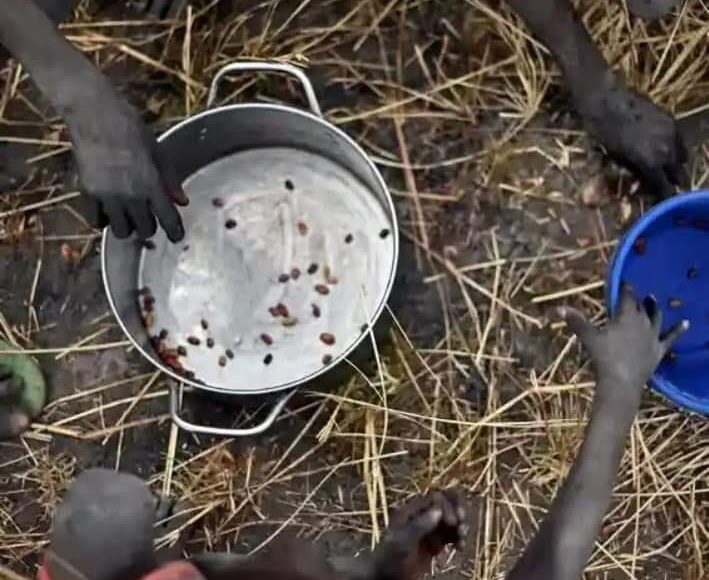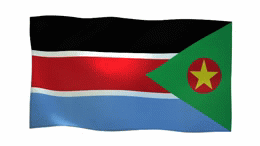
Humanitarian Response to Hunger Catastrophe in Nuba Mountains and Blue Nile Regions.
CIVILIAN AUTHORITY OF THE NEW SUDAN
Press release
Urgent Appeal for
Humanitarian Response to Hunger Catastrophe in Nuba Mountains and Blue Nile Regions.
Introduction
The Nuba Mountains region is currently located in South Sudan after the secession of the South in 2011, it covers an area of approximately138,000 square kilometers, Located in savannah region with rains during the summer. The region is bordered by several states including North Kordofan to the north, White Nile to the east, Upper Nile to the Southeast, Warab, Unity and Ruweng Administrative area to the south, and South Darfur to the west. It constitutes (15%) of the total agricultural land in Sudan with a population of 2,508,268 according to the purported census in 2010. the current population in the SPLMN controlled areas of Nuba Mountains and New Fung regions has reached 3,000,000 people as a result of IDPs seeking refugee from conflict zones
Similarly, the New Fung region is located in southeastern Sudan bordered by Sennar State to the northeast, Ethiopia to the southeast, and upper Nile State in South Sudan to the west. It covers an area of (83,500) square kilometers, with an estimated population of about (800,000) in 2010 census. Currently, the population has risen to (903,526) including an additional (115,000) IDPs who have been displaced as a result of the conflict on April 15, 2023
For almost 70 years, the two reigns have Continuously suffered from cultural, economic, political and development marginalization imposed by the successive regimes in Sudan (since 1956). Initially, the marginalized people of the two regions believed in peaceful resistance strategy to share and voice their grievances with the central governments in Khartoum of their legitimate demand for total inclusivity, however this appeals were repeatedly rejected and as a result, led to prolonged war following the inception of the (Sudan People’s Liberation Movement/Army SPLM/A as armed revolutionary struggle which was then joined massively by people from the two regions to fight for their legitimate right and equal citizenship. The conflict has negatively impacted the regions’ already existing fragile infrastructure, making survival increasingly difficult for the affected populations. Furthermore, the conflicts on June 6, 2011 and April 15, 2023, have worsened the situation beyond imagination, resulting in a current hunger catastrophe in both regions.
According to United Nations standards, declaration of hunger requires the following:
- Number of households running short of food is not less than 20%
- Rate of Malnourish children in over 30%
- When the mortality rate exceeds two deaths per day per 10,000 people
The UN Reports
The most recent report by UN experts regarding the humanitarian crisis in Sudan discloses that there are 25 million Sudanese individuals experiencing severe food insecurity, with 14 million being children, out of which 3 million of them are under the age of five suffering from severe malnutrition.
The office for the Coordination of Humanitarian Affairs (OCHA) has stressed the urgent need to address the severe food security crisis in the Nuba Mountains which has lost its means of production or access to the resources needed to enhance food production while receiving large number of Internally Displaced Persons/returnees fleeing from conflict zones in Sudan. The situation is worsened as the little food stock that the host community has been able to produce is being shared and rapidly depleted.
With the initial assent of the SPLMN leadership willing to allow free access of aid delivery to territories under its control, The Office for the Coordination of Humanitarian Affairs (OCHA) has started to explore all options available to facilitate humanitarian aid delivery to the affected areas under SPLMN, in this context, OCHA has worked to establish an office in South Sudan and another in the SPLMN controlled areas.
Causes of famine in Sudan
The conflict in Sudan has significantly reduced the farming areas by (60%) forcing 80% of the agricultural work force to flee the productive areas to become refugees or displaced persons. The current agriculture situation for the sorghum crops (which the majority of the population relies on) indicates that (70%) of the sorghum growing areas are out of production due to the war, resulting in a loss of (72%) of expected production
The situation has drastically worsened as the conflict spreads to most states, with 13 states no longer being able to produce agricultural goods (including the five Darfur states, the three Kordofan states, Blue Nile, White Nile, Gezira, Khartoum, and Sennar).
The hunger gap cycle in the Nuba Mountains and New Fung regions was first witnessed in 1984 due to severe drought and desertification, resulting in deaths of thousands. The second hunger gap was witnessed in 1991 when the two regions were under siege of SAF whose blockade seeks to strangle the economy and force the starving civilians into the notorious peace camps, also using food as weapon of war against the starving civilians resulted in death of over ten thousand people mostly children and aged individuals, while 500,000 others migrated to government-controlled areas, where they were placed in camps and subjected to brutal treatment forcing policies of Islamization and Arabization.
The poor harvest season in 2024 along with the locust infestation and the ongoing armed conflict between SAF and RSF, are the primary factors contributing to the current food insecurity in the Nuba Mountains region. Farmers are facing numerous challenges in accessing essential resources for farming, including seeds, fuel, and spare parts due to market closures enforced by the Rapid Support Forces. The locust invasion was the worse of its kind, a pest which has destroyed the agricultural crops on which the people rely as the primary means of livelihood and survival for the population in the region. Additionally, the outbreak of measles in the New Fung region and aerial bombing by the armed forces in both regions also prevented farming activities last season.
The situation is further worsened by the decision made by the government of Port Sudan to sell the humanitarian aid allocated for the two regions under the pretext of limited access to the intended regions, citing road closure by RSF, leaving the host community with no choice but share the minimal strategic food reserves with the large number of IDPs who crossed to seek refuge in the SPLM-N controlled areas. Civilian villages in both regions were also targeted through a scorched earth policy, burning crops and homes, displacing residents to camps, and blocking roads, making it difficult to obtain necessary goods. The current humanitarian crisis in both regions is considered the most severe compared to other states.
Current Situation in the Regions:
Now, more than (20%) of families in both regions suffer from severe food shortages, and over (30%) of children suffer from malnutrition.
URGENT APPEAL:
The New Sudan Civil Authority appeals to all national, regional, international organizations and institutions working in humanitarian sector for an urgent response to address this humanitarian catastrophe and save the lives of citizens in the mentioned areas. We also call for visits to New Sudan (SPLM-N controlled areas) to witness the extent of the suffering.
Further detailed information can be provided later.
Arnu Nugutlu Lodi
First Secretary of the Civil Authority of New Sudan

